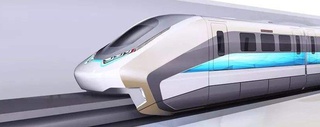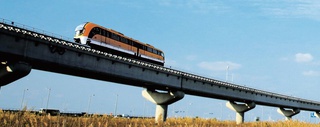The Benefits of Maglev Technology
The earliest patents for electromagnetic transportation systems date back to the beginning of the 20th century. Hermann Kemper, a German inventor, filed a series of patents in the late '30s for a technology that uses magnetic levitation trains propelled by linear motors. The maglev prototypes were tested during the next decade, and the first line was opened in 1984 near Birmingham, England. The commercial operation has had a relatively short history compared to the conventional railway. Let's look in detail at the advantages of maglev technology.
High Level Of Safety
Synchronized propulsion makes collisions between maglevs unimaginable. If two trains were placed simultaneously in the same guideway segment, they would be forced by the motor in the guideway to travel at the same speed in the same direction. Instead, maglevs are using their dedicated guideway without intersections. The infrastructure is designed to withstand a collision with smaller objects, and because of the levitation, they glide above most of them. Apart from an accident in 2006 caused by human error on a test track, maglev has a perfect safety record with millions of kilometers of service history.

No Derailment
Magnetic levitation technology eliminated the safety risks of operating
conventional rail transportation systems. Transrapid vehicles wrap around the guideway beam, and the SCMaglev levitates between the guideways, making a derailment virtually impossible.

Reliability
The benefits of maglev are hard to contest when it comes to reliability. The absence of physical contact between the vehicle and the track significantly extends the lifespan of maglevs. As a result of wheels, rails, and supporting machinery being replaced by electromagnets (EMS system) or superconducting magnets (EDS system), there is less mechanical failure. In addition, moving parts prolong the lifetime of the vehicles and the track. Even in bad weather, problems are rare as the contactless maglev levitates 10 cm (4 inches) above the guideway (SCMaglev technology). Rain, snow, or ice causes little to no harm to maglevs.

High-Speed
Maglevs are famous for their incredible speed. They are as fast or faster than most propeller aircraft. Conventional rail is not far off in the testing environment. The LGV Est French TGV train has a record speed of 574.8 km/h (357 mph), which is not even 30 km/h slower than the maglev record set by the L0 Series SCMaglev of 603 km/h (375 mph). The difference is a safe commercial operation. The L0 Series has an approved commercial top speed of 505 km/h (314 mph), whereas the current fastest operating conventional train, the CRH380 series in China, is topping out at 350 km/h (217 mph).

Eco-Friendly
Maglev can use elevated guideways to minimize the disturbance to the natural environment, including wildlife. The flexible alignment parameters allow the guideway to adapt to the landscape. There are no direct emissions from the moving vehicles to affect air quality. The indirect emissions resulting from energy production are getting lower as the energy grid gets cleaner by the day. In addition, noise pollution is much lower than in traditional rail. The absence of overhead lines that provide electrical energy to conventional trains significantly reduces visual pollution. Last but not least, owing to the better maneuverability, infrastructure can be built respecting the natural landscape, following the paths of the environment.

Costs and Maintenance
Maglev's upfront higher cost of building dedicated tracks is compensated by the much lower maintenance fees. In addition, due to automated non-contact technology, maintenance costs for Transrapid system operation are significantly less than conventional high-speed rail technology.
Vehicle operation causes neither misalignment nor wear of the guideway structure, equipment, and surfaces. Most moving mechanical components that wear down for other technologies have been replaced by non-wearing electronic and electromagnetic components in maglev systems like the German Transrapid or the Japanese SCMaglev. In addition, the full-length levitation magnets evenly distribute vehicle weight, resulting in less stress and lower dynamic loads on the guideway. As repairs are costly and time-consuming, this is a tremendous economic incentive to invest in maglevs.

Energy Efficient
With its non-contact levitation and propulsion technology, highly efficient linear motor, and low aerodynamic resistance, the maglev systems' energy consumption is very economical compared to other transportation modes. There is no energy loss due to friction. Therefore the faster the train, the larger the difference between maglev and conventional rail technology. The energy efficiency of an ICE 3 train is on par with Transrapid at speeds of 300 km/h (186 mph). However, at 350 km/h, the maglev is 6% more efficient, and the gap gets larger the faster they go. Future systems are promising even better results. The Japanese SCMaglev claims to have 30% lower energy consumption than the Transrapid maglev trains used in Shanghai.

The Quietest Transportation System
Transrapid technology is much quieter than other traditional transportation systems as it does not produce any rolling, gearing, or engine noise. Predominantly aerodynamic noise is minimal even at 200 km/h. To put things into perspective, the German S-Bahn (city rail) system going at 80 km/h is noisier than a maglev passing by at 200 km/h (80 / 73 decibel). It is precisely as noise as the S-Bahn when the maglev travels already at 300 km/h: 80 dB. The Transrapid emits less noise at 400 km/h than an ICE traveling at 300 km/h: 89 / 90 dB. It is, therefore, the preferable technology both in urban and natural environments.

Maglev Saves Space
Maglev's footprint is negligible from an ecological point of view and literally. The territorial requirement is only 2 m2/one-meter track length if it's elevated and 12 m2/m if it's built on the ground level compared to 14 m2/m needed for traditional rail. This, as a result, means more available space for nature to thrive, for agriculture, or for public areas in an urban environment.

Climbing Grade and Maneuverability
The least known fact about maglev technology is their ability to steep climb. This enables the planning of maglev infrastructure in more demanding environments with hills and valleys. On top of this, maglev trains can take tighter turns than regular rail.

Desirability
Sleek and futuristic design and the mystery of hovering above the ground. Maglev is a fascinating technology that inspires creative minds and opens the path to designing the future. The levitation is almost like magic. It's common to portray futuristic transportation in sci-fi movies, like floating cars and hoverboards in the Back to the Future pop culture movie.
The proposed New York - Washington Maglev

Bibliography
Maglev Energy Budget - Stanford University 2010
Northeast Maglev - SCMaglev Energy Consumption
Maglev: Magnetic Levitating Trains by Cornell Wilson - TTS Educational Technologies 2015
Technology Comparison: High Speed Ground Transportation - American Maglev Group 2002
Comparison of High-Speed Rail Systems - Georgia Institute of Technology 2010





